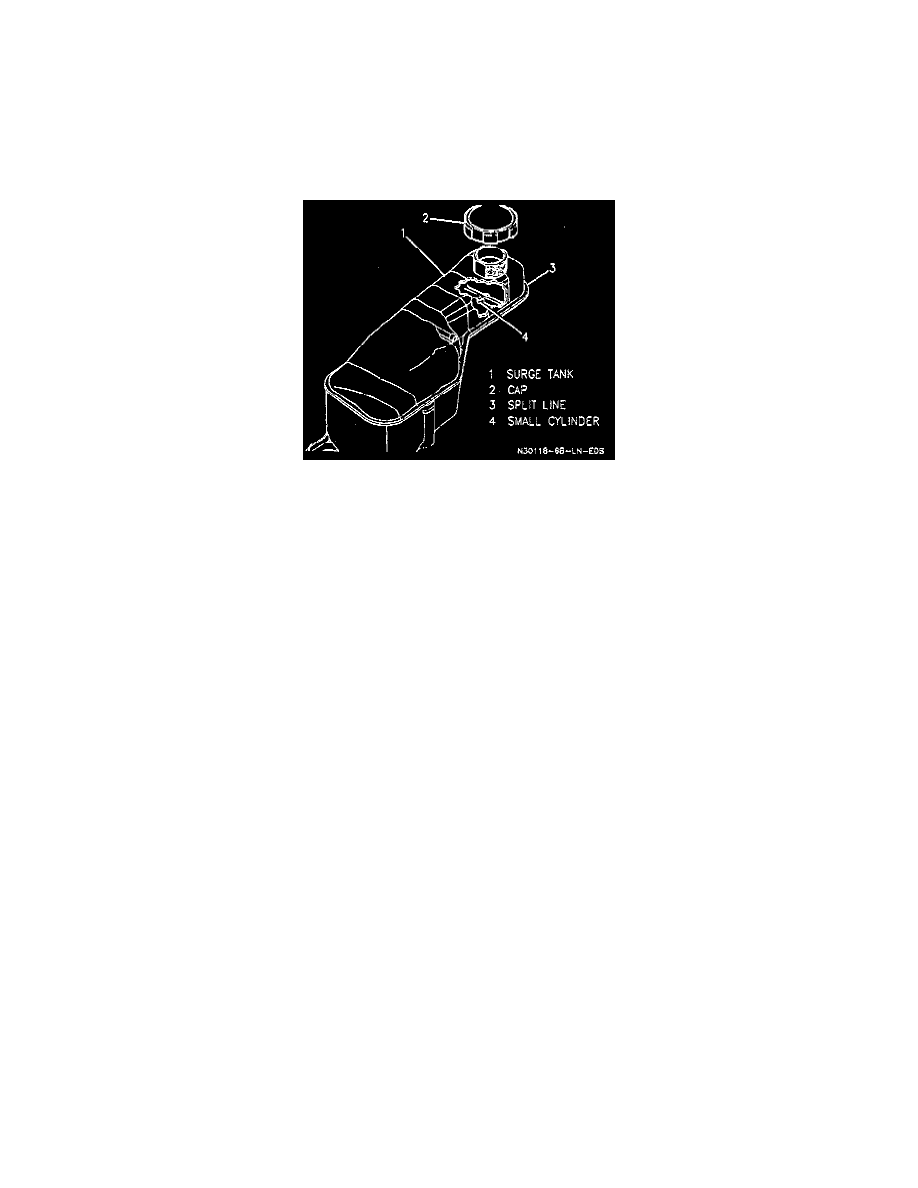Skylark L4-144 2.4L DOHC VIN T SFI (1997)

Coolant: Testing and Inspection
Checking Coolant Level
CAUTION: Do not add cold water to the cooling system with the engine at or above operating temperature. Adding cold water causes rapid cooling,
resulting in possible engine damage.
NOTE: Check the engine coolant in the radiator surge tank every time the hood is up and the engine coolant is cold. The levels should be near
appropriate mark when the system is cold. At normal operating temperature the coolant level should increase. Coolant should be added only to the surge
tank to raise level to the appropriate mark.
WITH THE ENGINE COOL
1. Remove the surge tank pressure cap.
a. Slowly rotate cap counterclockwise about 1/4 turn and then stop.
b. Wait until any residual pressure (indicated by a hissing sound) is relieved.
c. After all hissing stops continue to rotate counterclockwise until cap is removed.
2. Coolant level should be at the full cold line.
3. If the coolant level is low:
a. Fill surge tank with the proper mix of coolant to the full cold line.
b. With the pressure cap off, start the engine and let it run until the upper radiator hose starts to get hot.
c. If the coolant level is lower than the full cold line, add proper mix of coolant to the surge tank until the level reaches the full cold line.
4. Install the surge tank pressure cap with hand tight pressure.
WITH THE ENGINE HOT
1. Check the coolant level in the surge tank. The coolant level should be above the full cold line.
2. If surge tank needs refilling, allow engine to cool and follow procedure WITH THE ENGINE COOL.
